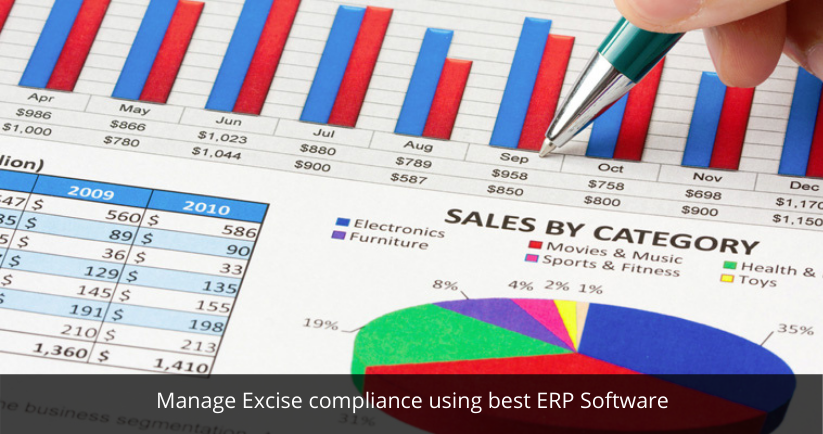Excise is a very important component for a Manufacturing or Trading industry.
By definition, “an excise or excise tax (sometimes called a special excise duty) is an inland tax on the sale, or production for sale, of specific goods or a tax on a good produced for sale, or sold, within a country or licenses for specific activities. Excises are distinguished from customs duties, which are taxes on importation.”
For any Indian Manufacturing company, it becomes very important for them to not only compute the taxes, but also maintain the records on their system. If the company insists in using traditional record maintaining process like excel, spreadsheets, workbooks, there is bound to be human error or the fear of data loss.
Is there is better way to manage excise compliance for a company? Yes. There is.
For making excise computation and maintenance easy, there is an add-on for Sage 300 ERP which captures the additional statutory data while doing purchases, sales or transfer of goods. This data is required to furnish the statutory reports to the Central Excise division.
The most critical part in excise, in case of importer purchase, is DUTIES CALCULATION namely C.V.D., B.E.D., A.E.D., etc. With the help of Sage 300 ERP, this task is made easier and faster as it will help users to calculate these duties automatically.
Sage 300 ERP comes with the benefit of a complete accounting package which are statutory compliant. The Excise module for Sage 300 ERP provides the user an interface to input various information required by government to furnish returns and maintaining various mandatory registers by a company.
The main feature of any software needs to be the flexibility to adapt to the changing times and help the company grow. In excise also, the rates might be redefined by the government at a certain period of time. It is in these times that the company should not face any problems for changing the new excise values in the software. Sage 300 ERP provides the user to easily change tax rates, assessable value, supplier statutory data etc. when there is a change in central excise rules.
One of the crucial tasks in every Indian business is to handle the Central Excise Transactions and capture all statutory information in a simplified manner.
The components of excise duty used in User Interface:-
B.E.D. – Basic Excise Duty
S.E.D. – Special Excise Duty
A.E.D. – Additional Duty of Excise
S.A.E.D. – Special Additional Excise Duty
CESS – Cess levied under different Cess enactments
SCess- Secondary Education Cess on Excise duty
The excise duty is levied according to the rates that are specified in the Central Excise Tariff Act.
Sage 300 ERP Add-on for Excise would maintain Information:
- Standard registration and statutory information like: PAN, VAT, Central Sales Tax Number, E.C.C., C.E. Registration Number and RG32 Numbering methods
- Excisable and Non Excisable Warehouses or Warehouses
- 20+ Excise specific Customer Information like C.E. Registration Number, E.C.C., PAN and CE Commiserate
- 30+ Vendor Information like C.E. details, PAN details and Range Details, Division Details
- 20+ Item Details for Excisable Items like Tariff Class, Price and Item Type
- Receive Excise Goods and Calculate Excise Tax from Purchase Order Entry of Sage 300 ERP with Assessable Amount and Vendor Information
- Return Excise Goods from Purchase Order Return Entry Screen and reconcile Excise Taxes accordingly
- Excisable Goods and Calculate Taxes against the assessable amount against the respective Receipt
- Maintain business logic and GAAP principles in all transactions Details
- Maintain 20+ Item Details for Excisable Items like Tariff Class, Price, and Item Type
For more details, you can visit Sage Software Solutions or write to us at sales@sagesoftware.co.in





